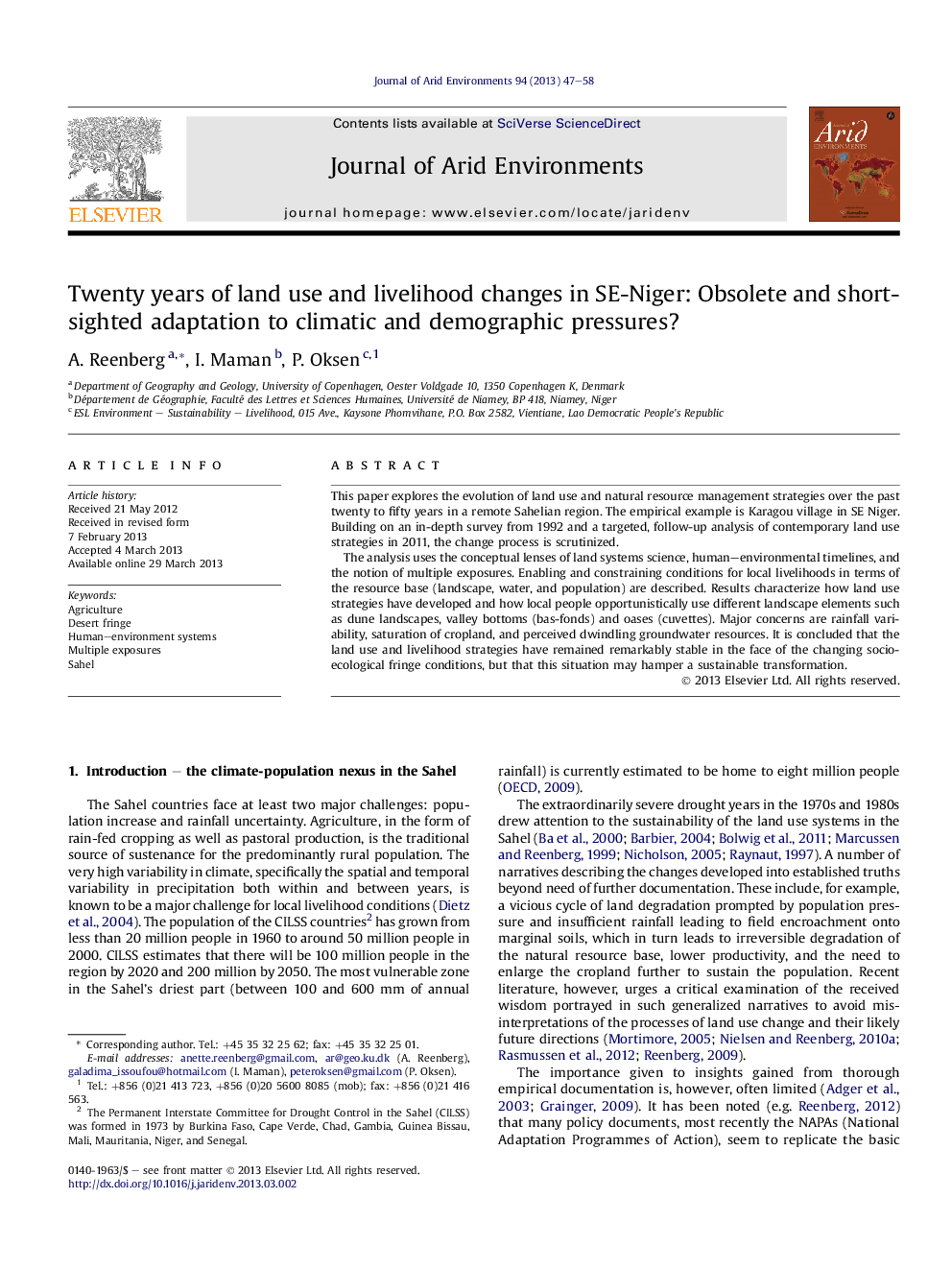| Article ID | Journal | Published Year | Pages | File Type |
|---|---|---|---|---|
| 4393172 | Journal of Arid Environments | 2013 | 12 Pages |
•We explore local changes in land use and livelihood over 20 years.•We investigate the triple exposure of population pressure, climate and globalization.•We find that local strategies are remarkably resilient to changes.•People know well how to try to cope with climate variability in their land use.•The stability and resilience in poor regions may hamper ability to transformation.
This paper explores the evolution of land use and natural resource management strategies over the past twenty to fifty years in a remote Sahelian region. The empirical example is Karagou village in SE Niger. Building on an in-depth survey from 1992 and a targeted, follow-up analysis of contemporary land use strategies in 2011, the change process is scrutinized.The analysis uses the conceptual lenses of land systems science, human–environmental timelines, and the notion of multiple exposures. Enabling and constraining conditions for local livelihoods in terms of the resource base (landscape, water, and population) are described. Results characterize how land use strategies have developed and how local people opportunistically use different landscape elements such as dune landscapes, valley bottoms (bas-fonds) and oases (cuvettes). Major concerns are rainfall variability, saturation of cropland, and perceived dwindling groundwater resources. It is concluded that the land use and livelihood strategies have remained remarkably stable in the face of the changing socio-ecological fringe conditions, but that this situation may hamper a sustainable transformation.
